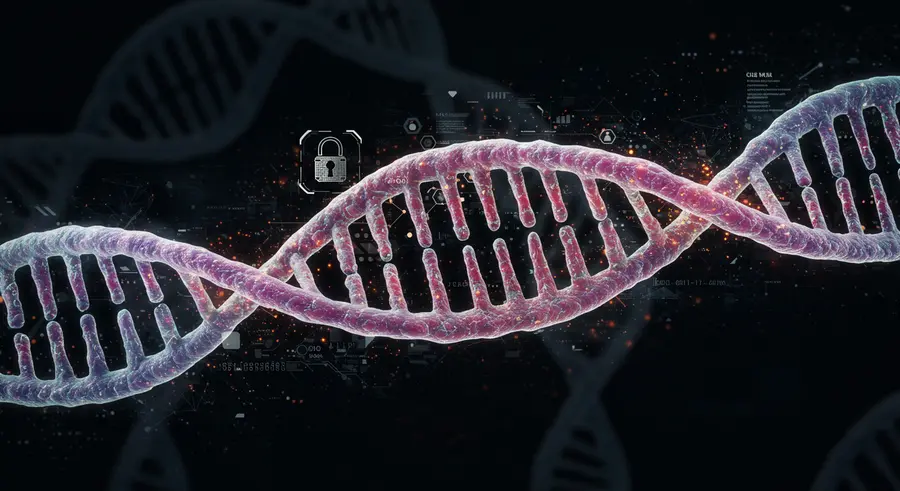The Future of Identity: Exploring DNA Biometrics

Deoxyribonucleic Acid (DNA) biometrics stands as one of the most accurate and unique identifiers available, offering a glimpse into the future of high-security authentication. Every individual, barring identical twins, possesses a unique DNA sequence. This inherent uniqueness makes DNA an incredibly powerful tool for identification, far surpassing many traditional and even other biometric methods in terms of precision.
How DNA Biometrics Works
The process of DNA biometric authentication involves several key steps, transforming a biological sample into a verifiable digital identity marker:
- Sample Collection: This involves obtaining a biological sample from an individual. Common sources include blood, saliva, hair follicles, or skin cells. The method of collection must be carefully considered to ensure sample integrity and minimize discomfort or invasion of privacy.
- DNA Extraction and Profiling: Once a sample is collected, the DNA is extracted from the cells. Specific regions of the DNA, known as genetic markers (e.g., Short Tandem Repeats - STRs, or Single Nucleotide Polymorphisms - SNPs), are then analyzed to create a unique DNA profile. This profile isn't the entire genome but a specific set of markers that are highly variable between individuals.
- Database Comparison: The generated DNA profile is then compared against a database of stored profiles for verification (1:1 matching) or identification (1:N matching). In an authentication scenario, the live sample's profile would be matched against a pre-enrolled profile of the individual claiming the identity.
For more information on the foundational science, the National Human Genome Research Institute offers excellent resources on genomics.
Applications of DNA Biometrics
While not yet mainstream for everyday authentication like unlocking phones, DNA biometrics has critical applications:
- Forensic Science: This is the most well-known application. DNA evidence plays a crucial role in criminal investigations, helping to identify suspects or exonerate the wrongly accused.
- Paternity Testing and Kinship Analysis: DNA profiling is the gold standard for establishing biological relationships.
- High-Security Access Control: In theory, DNA could be used to control access to extremely sensitive facilities or data, although practical limitations currently hinder widespread adoption in this area.
- Missing Persons Identification: DNA databases help identify unknown remains and connect them with missing individuals.
- Personalized Medicine: While not strictly authentication, understanding an individual's genetic makeup is crucial for tailoring medical treatments, showcasing another facet of DNA's identifying power.
Advantages of DNA Biometrics
- Unparalleled Accuracy: The statistical probability of two individuals (except identical twins) having the same DNA profile is infinitesimally small, making it an extremely reliable identifier.
- Stability: An individual's core DNA sequence remains constant throughout their life.
- Difficult to Forge (Natively): While a DNA sample itself could be stolen or planted, the underlying genetic code cannot be easily faked in the same way a password can be guessed or a fingerprint spoofed with rudimentary methods. However, sophisticated spoofing with synthetic DNA is a theoretical concern.
Challenges and Limitations
Despite its strengths, DNA biometrics faces significant hurdles for widespread authentication use:
- Speed of Analysis: Current DNA profiling techniques can take hours or even days, making them unsuitable for real-time authentication scenarios like accessing a building or a digital account. "Rapid DNA" technologies are improving this, but still lag behind other biometrics.
- Cost: DNA analysis requires specialized equipment and trained personnel, making it significantly more expensive than other biometric methods.
- Privacy Concerns: DNA contains a vast amount of sensitive personal information beyond identity, including predisposition to diseases, ancestry, and familial connections. Storing and using DNA data for authentication raises profound privacy and data protection issues. The UN Human Rights Office work on privacy highlights some of these concerns.
- Ethical Dilemmas: Issues such as consent for data collection, potential for genetic discrimination (e.g., by employers or insurers), and the security of DNA databases are major ethical considerations.
- Contamination and Misinterpretation: DNA samples can be easily contaminated if not handled properly, potentially leading to false results. The interpretation of complex DNA mixtures also requires significant expertise.
- Invasiveness: Sample collection can be perceived as more invasive than, for example, a fingerprint scan or facial recognition.
The Future of DNA Biometrics in Authentication
The role of DNA in routine authentication is still largely futuristic, but advancements are paving the way for potential niche applications. Key developments include:
- Advancements in Rapid DNA Technology: Efforts are underway to develop devices that can process DNA samples and produce profiles in minutes rather than hours, potentially opening doors for on-site, near real-time applications in specific, high-stakes contexts.
- Focus on Non-Coding DNA: To mitigate privacy concerns, future systems might focus exclusively on non-coding regions of DNA (often referred to as "junk DNA," though this term is becoming outdated as functions are discovered) for identification, thereby reducing the amount of sensitive genetic information revealed.
- Integration with Other Biometrics: DNA could serve as an ultimate verification layer in multi-modal biometric systems, used only when other, faster methods yield ambiguous results or in extremely high-security scenarios.
- Robust Ethical Frameworks and Legislation: For DNA biometrics to gain wider acceptance, comprehensive legal and ethical guidelines will be essential to protect individuals' genetic information and prevent misuse. International collaboration on standards, such as those discussed by ISO/TC 276 Biotechnology, will be crucial.
Conclusion
DNA biometrics offers an unparalleled level of accuracy for identity verification. While its current applications are predominantly in forensics and specialized identification, ongoing technological advancements and the development of stricter ethical and privacy frameworks may eventually allow for its cautious integration into specific high-security authentication domains. The journey of DNA from a forensic tool to a potential component of our digital identity systems is complex but holds fascinating possibilities for the future of security.